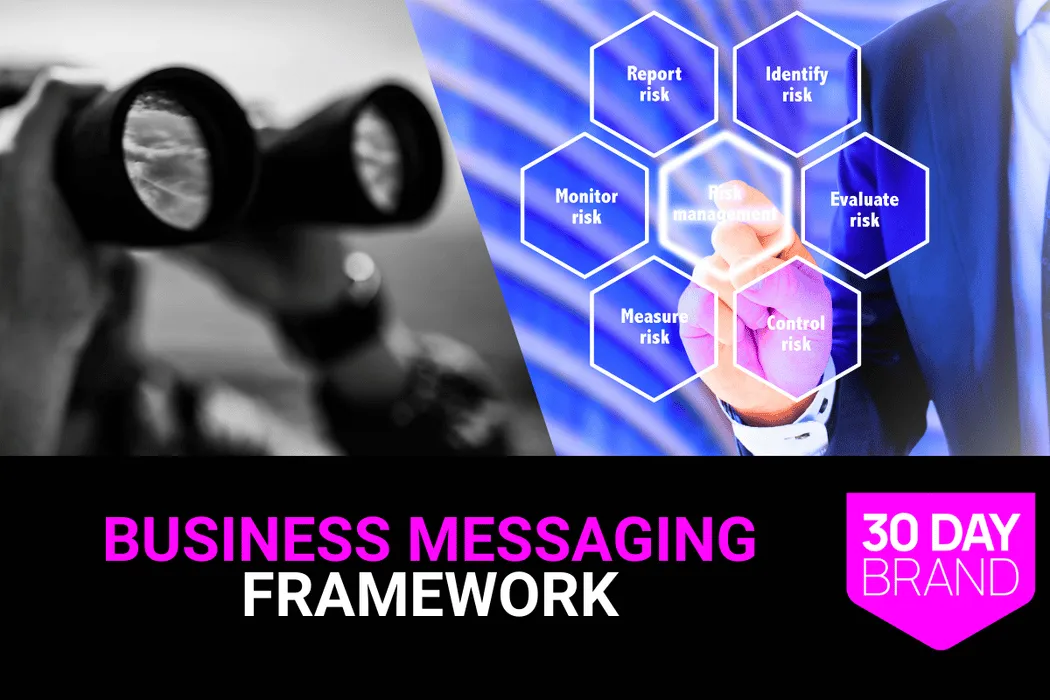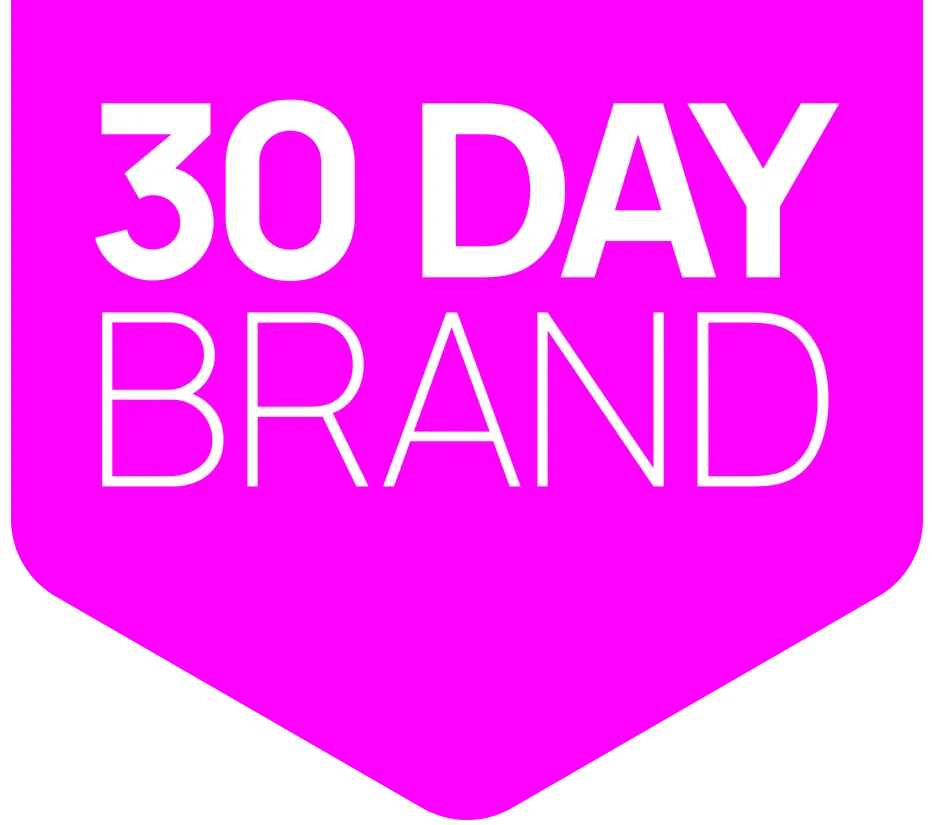
Business Messaging Framework: A Step-by-Step Guide
Quick Definition
A business messaging framework = A dead-simple, repeatable system for making sure every word you write or speak about your business actually makes you money. It’s not a collection of fluffy brand values; it’s a strategic weapon.
The Pain of No Framework
You're winging it. Admit it. One day you're a "disruptive innovator," the next you're a "trusted partner." Your website says one thing, your sales team says another, and your LinkedIn profile is a wasteland of corporate jargon. This isn't just messy; it's costing you deals. Inconsistent messaging confuses 71% of customers, leading them to take their business elsewhere (Forrester, 2024). You're stuck in an endless cycle of rewriting your copy, second-guessing your value, and wondering why your marketing feels like shouting into a void. It's exhausting, and it's keeping your business from growing up.
Without a framework, you're missing the foundation of effective marketing. This is why understanding the broader business messaging strategy is crucial—it provides the context for why frameworks matter so much.
The 5-Step Business Messaging Framework
Step 1: The Unfiltered Brain Dump
What it is: Before you can get clear, you have to get everything out. This is a raw, unfiltered dump of every thought, idea, and assumption you have about your business, your customers, and your value.
How to do it:
Get a whiteboard or a big piece of paper.
For 30 minutes, write down the answers to these questions: Who do we help? What problem do we solve? How do we solve it? Why are we different? What do we want to be known for?
Don’t filter. Don’t edit. Just write. It’s supposed to be a mess.
Expected results: A chaotic but honest snapshot of your current messaging. This is your starting point. You can’t fix what you can’t see.
Time to implement: 30 minutes.
Cost: A few brain cells.
Step 2: The Customer Interrogation
What it is: You're going to stop guessing what your customers think and actually ask them. This is where you find the gold. Your customers have the answers; you just have to be willing to listen.
How to do it:
Interview 5-10 of your best clients.
Ask them these questions: What was going on in your business that made you look for a solution? What was the biggest pain point? What did you hope to achieve? What was the biggest change after working with us? How would you describe what we do to a friend?
Record the calls and transcribe them. Highlight the exact words and phrases they use.
Expected results: A treasure trove of your customers' actual language. Using the voice of the customer in your messaging can increase conversion rates by up to 400% (MarketingExperiments, 2024).
Time to implement: 2-3 weeks of scheduling and conducting interviews.
Cost: Your time and a willingness to hear the truth.
This customer interrogation process is essential for achieving clear business messaging that actually resonates with your audience.
Step 3: The One-Sentence Value Proposition
What it is: This is the core of your entire framework. It’s a single, powerful sentence that explains exactly what you do, who you do it for, and what the outcome is. If you get this right, everything else falls into place.
How to do it:
Use this formula: We help [specific customer] achieve [specific outcome] by [your unique approach].
Use the language you stole from your customers in Step 2.
Make it so simple a 10-year-old could understand it. No jargon. No buzzwords.
Test it. If it doesn’t immediately click with people, it’s not done yet.
Expected results: A value proposition so clear and compelling that it becomes the foundation for all your marketing. Companies with a strong, clear value proposition have 70% higher conversion rates (HubSpot, 2024).
Time to implement: A week of painful wordsmithing.
Cost: Your sanity.
Step 4: The 3-Point Message Map
What it is: You can't say everything at once. This is where you create three core supporting messages that back up your value proposition. These are the pillars of your story.
How to do it:
Based on your customer interviews, identify the three most important things your clients need to believe to buy from you.
These could be about the problem (e.g., "The real problem isn't X, it's Y"), your solution (e.g., "Our approach is different because..."), or the outcome (e.g., "This isn't just about saving money, it's about...").
For each of the three messages, find a proof point—a statistic, a case study, a testimonial—that backs it up.
Expected results: A simple, memorable structure for all your content. This consistency builds trust and makes your message stick. Brands with consistent messaging are 3.5 times more likely to enjoy strong brand visibility (Lucidpress, 2024).
Time to implement: A day of focused thinking.
Cost: Free.
Step 5: The Pressure Test
What it is: A framework is useless if it doesn't work in the real world. This is where you take your new messaging and see if it holds up under pressure.
How to do it:
Rewrite your LinkedIn headline and summary using your new framework.
Update the homepage of your website with your one-sentence value proposition and three supporting messages.
Use the new messaging in your next sales call.
Listen for the reaction. Do people get it? Are they more engaged? Do they ask better questions?
Expected results: Real-world validation (or a quick failure that you can learn from). You'll know immediately if your new framework is working, allowing you to adapt quickly.
Time to implement: A week of live testing.
Cost: The courage to try something new.
Quick Implementation Guide
Start here: Don't try to do all five steps at once. Start with the Customer Interrogation. Talk to your clients. It's the most valuable thing you can do.
Then do this: Once you have your customers' language, tackle the One-Sentence Value Proposition. Lock yourself in a room and don't come out until it's done.
Measure this: Track your website's conversion rate for a month before and a month after you update your homepage with the new messaging. That's the only number that matters.
Key Statistics
71% of customers get confused by inconsistent messaging and take their business elsewhere (Forrester, 2024).
Using the voice of the customer in your messaging can increase conversion rates by up to 400% (MarketingExperiments, 2024).
Brands with consistent messaging are 3.5 times more likely to enjoy strong brand visibility (Lucidpress, 2024).
FAQ
How is this different from a brand strategy?
A brand strategy is about your values, your personality, your logo. It's important, but it's the fluffy stuff. A messaging framework is a sales tool. It's a machine for turning confused prospects into paying clients. You need both, but you should build the framework first.
How often should I update my framework?
You should review it every six months. The market changes, your customers change, and your messaging needs to keep up. This isn't a one-and-done project; it's a living document.
What if I have multiple target audiences?
Then you need a messaging framework for each one. You can have a core value proposition that's the same for everyone, but your supporting messages and proof points should be tailored to the specific pain points of each audience.
Can I do this myself, or do I need to hire someone?
You can do it yourself, but it's hard. You're too close to it. You're blind to your own jargon. Hiring an outsider can give you the clarity you need. But if you're going to do it yourself, be ruthless. Get feedback from people who will be honest with you.
What's the biggest mistake people make when creating a messaging framework?
They skip the customer interrogation step. They think they know what their customers want, but they're just guessing. Your customers have all the answers. You just have to be willing to shut up and listen.
To understand the difference between messaging frameworks and other approaches, read our comparison of business messaging vs brand messaging. And to track the impact of your framework, check out our guide on business messaging ROI.
Ready to Stop Winging It and Start Winning?
You now have a proven 5-step framework for creating messaging that actually converts prospects into clients. But a framework is only as good as its implementation—and implementation requires discipline, consistency, and often an outside perspective.
Here's what to do next:
Step 1: Start with our FREE Brand Message Analyzer Tool to see exactly where your current messaging is failing and what needs to be fixed first.
Step 2: Begin with Step 2 of the framework—the Customer Interrogation. This single step will give you more clarity than months of guessing. Don't skip it.
Step 3: For a systematic approach that integrates messaging with your entire brand strategy, explore our proven SCALE System that helps you craft your story and implement it consistently across all touchpoints.
Step 4: When you're ready for expert guidance on building a framework that actually works, book a call with our team. We'll help you create a messaging framework that turns confused prospects into eager clients.
Remember: a messaging framework isn't just about what you say—it's about creating a system that makes every conversation, every piece of content, and every marketing dollar work harder for your business.
Your competitors are still winging it. You don't have to.










